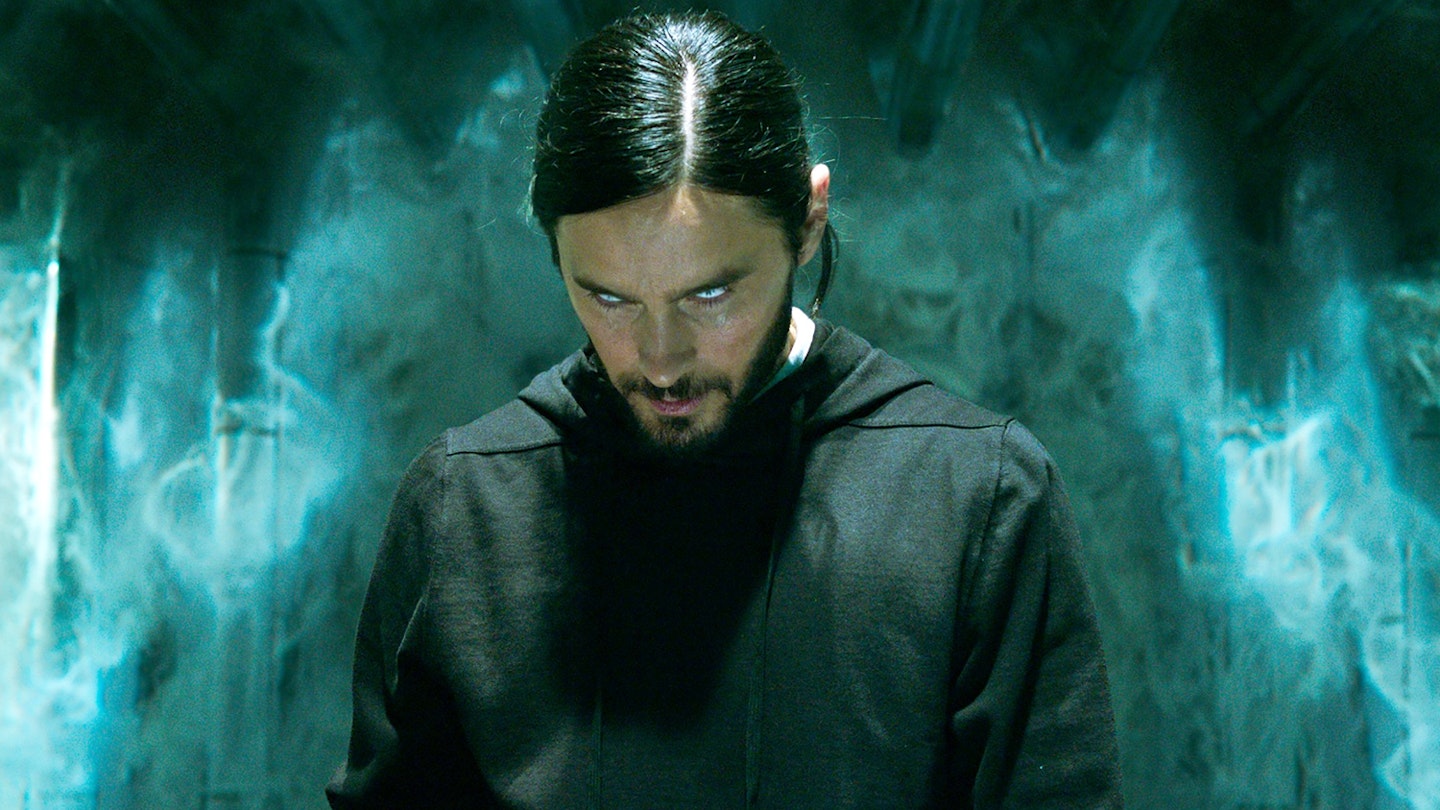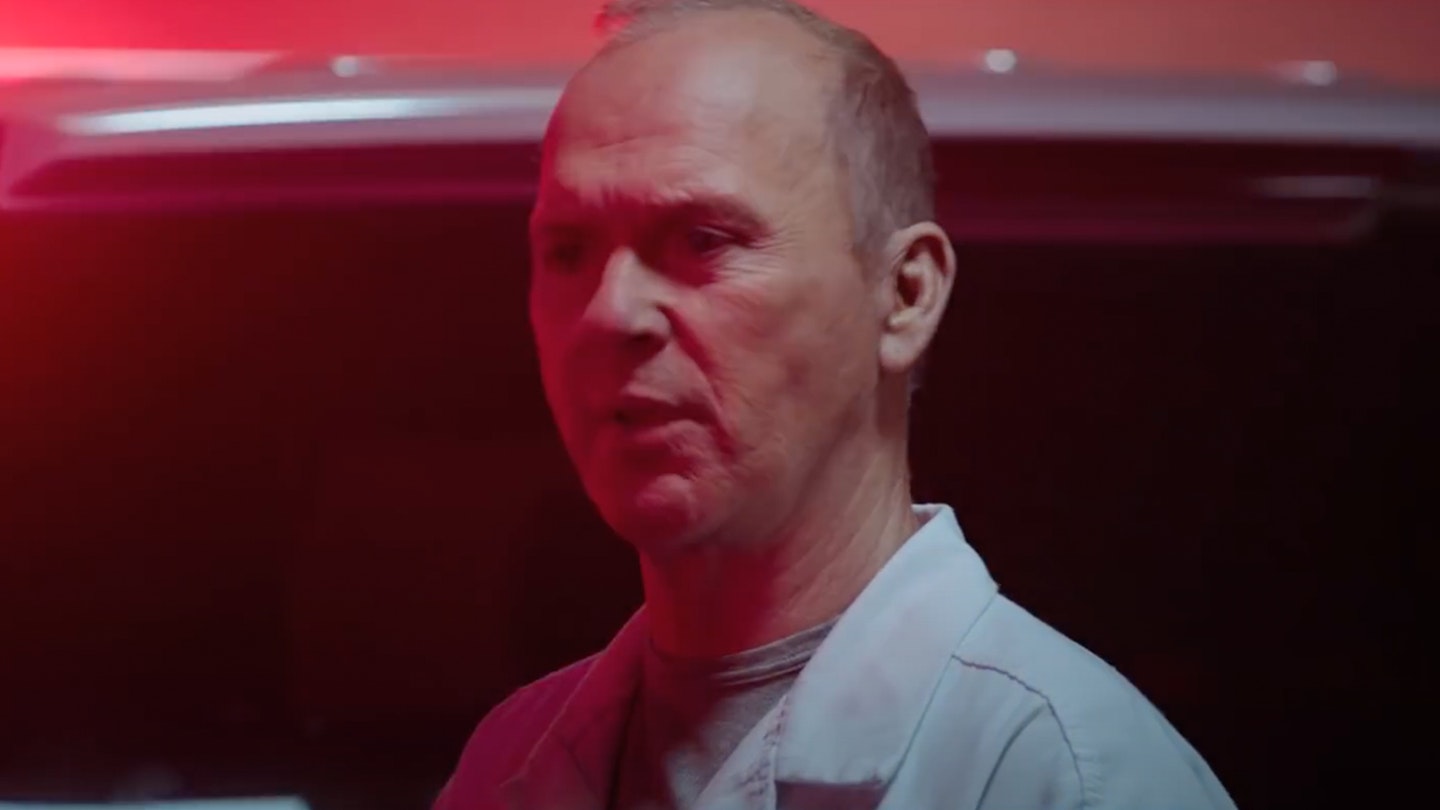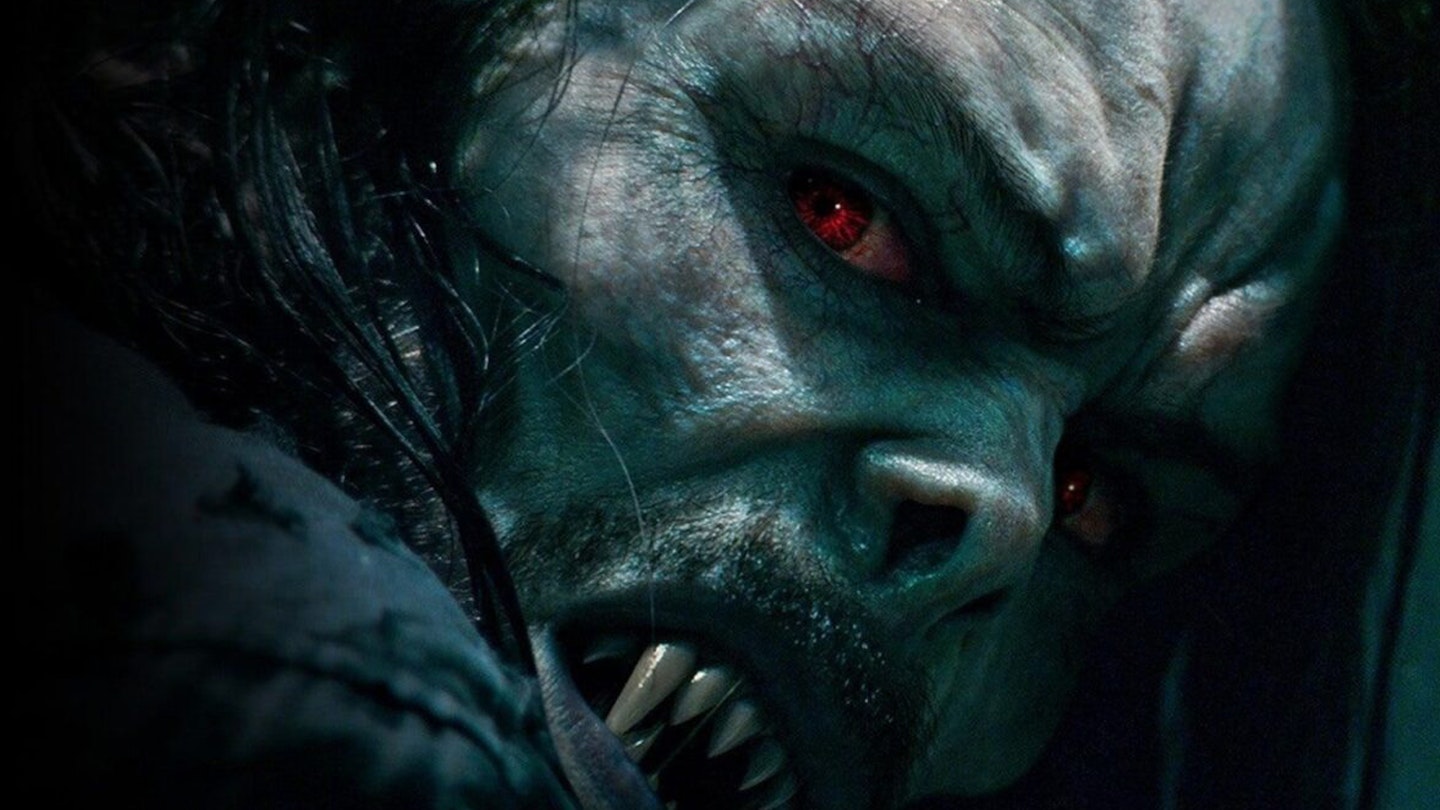Say what you like about Morbius. Seriously, say whatever you like! (You can read our two-star review here.) In common with a lot of people, I was not a fan of Jared Leto’s bloodlusting anti-hero origin story. But curiously, the most interesting part of a largely uninteresting film happens once the credits have started rolling: two short scenes that exist after the fact. Post-credit stings are standard-issue for superhero films these days, but Morbius’s stings in particular have raised more questions than answers — and implies multiple routes forward for the still-nascent Sony superhero universe, the franchise which at one point was known as Sony Pictures Universe of Marvel Characters. Hereafter and forever more, we shall refer to it as SPUMC.
Spoilers follow. Although, let’s be honest, there are other things that might also spoil your viewing experience.

Let’s be clear what we’re talking about: after Morbius’s initial credits roll, we see the purple multiversal crack-in-the-sky above New York, the same one seen in Spider-Man: No Way Home. Then, in a prison cell, we see Michael Keaton as Adrien Toomes, aka The Vulture, magically appear, presumably a result of Doctor Strange’s spell. Last seen in Spider-Man: Homecoming, Toomes looks a bit confused; a TV news story notes that he is likely being immediately released. A second scene sees Leto’s Michael Morbius driving in his sports car, where at an undisclosed location he meets Toomes — now in his full Vulture garb, refusing to take his mask off for some reason. Toomes mentions that his appearance has something to do with Spider-Man. They agree to team up. Roll credits.
Well. Where to begin? There are many, many questions, of various kinds. We have obvious questions (was Michael Keaton not available to film one of these scenes, given he’s only heard in voiceover?) and pedantic questions (how did Toomes build his suit again in this universe, given it was established in Homecoming that it was built from Chitauri tech discarded from the Battle Of New York? A battle that, as far as we can tell, did not happen in the SPUMC?)
There are questions, too, on how we ended up with the specific scenes in the finished film, rather than the ones seen in the trailer. Morbius’s first trailer, released way back in January 2020, explicitly teased the Vulture meeting Leto’s anti-hero under entirely different circumstances, in scenes that did not make it into the final cut. At some point during the film’s lengthy production schedule (principal photography started in February 2019, with reshoots in both 2020 and 2021), there was evidently some behind-the-scenes tinkering and rethinking.

We can only speculate on how those post-credits scenes were cobbled together, but there are some clues. In recent interviews, director Daniel Espinosa has responded to the film’s negative response (“I have a lot of self-hatred”, he told Insider) and implied that he did not have the final say on everything. “I think that I work at my best if I get a lot of decision power,” Espinosa told Uproxx “But, in these movies, they’re big movies that have a lot of people’s interest. It’s different processes every time.”
So, Espinosa may not have had his way in how Morbius ended. He also suggested, intriguingly, that Marvel Studios didn’t, either. “The concept of having different timelines, I believe, came from Sony, not from Kevin Feige,” he told Uproxx. “It was Sony that initiated that idea.”
This is instructive. What feels painfully clear from these post-credit stings is that Sony is pushing its universe in a certain direction, and that direction is ‘a Sinister Six team-up movie’, the team-up of supervillains usually associated with Spider-Man, and featured in the original Marvel comics since 1964. Never mind that we’ve already had a ‘Sinister Five’ of sorts in No Way Home: this is a clear, long-held desire, having already made one aborted attempt at going that route in The Amazing Spider-Man films. And in pure economic terms, it’s understandable. Put yourself in a studio executive’s shoes. Look at the incredible success of the Avengers movies. Why wouldn’t you want to replicate a little piece of that billion-dollar franchise-crossover pie?
It’s hard to shake the feeling that this is a case of a left hand that doesn’t know what the right hand is doing.
So this is what we’re building towards. The status of that eventual Sinister Six movie remains unclear at the moment; [Drew Goddard]{href='https://www.empireonline.com/people/drew-goddard/' target='_blank' rel='noopener noreferrer'} (The Cabin In The Woods) is still supposedly attached to direct, with producer Amy Pascal telling Vanity Fair in 2018: “I’m just waiting for Drew to be ready to direct it. I would do anything with Drew Goddard. I’m just waiting for him to tell me he wants to.”
But these post-credit stings suggest that Morbius — a character who, in his cinematic origin story at least, seems to be largely a decent guy, and has absolutely no beef with Peter Parker or Spider-Man — is teaming up with the Vulture to take Spidey down. SPUMC’s upcoming slate (including Madame Webwith Dakota Johnson, and next year’sKraven The Hunter with Aaron Taylor-Johnson) suggests some more of the line-up.
Unfortunately, the narrative problems of multiple timelines begin to stack up under scrutiny. Michael Keaton’s Toomes came from the Marvel Cinematic Universe, but now exists in the SPUMC. Who is Spider-Man in the SPUMC? Is it Tom Holland’s Peter Parker? Or is it Andrew Garfield? Or another one entirely? Who are they actually teaming up to fight? Other than Vulture, who even has the motivation to fight him at all?
It feels obvious, to me at least, that those baffling post-credits sting were made in response to the events of Spider-Man: No Way Home; that Toomes was originally supposed to be in the same universe as both Tom Holland’s Peter Parker and Michael Morbius; and that some hasty retconning set up the SPUMC and MCU as distinct, separate timelines in one wider multiverse, albeit timelines that could be travelled between.
And, y’know — fine! Multiverses are well-established in the comics, and now pretty well-established in the films, too; audiences are sophisticated enough to keep track. But it’s hard to shake the feeling that this is a case of a left hand that doesn’t know what the right hand is doing. Having two cinematic universes that are adjacent, rather than the fully entwined, leads to confused and shambolic filmmaking of the kind we see in Morbius’s final minutes. If the SPUMC is to be taken seriously, it needs to feel like there’s a plan: one that encompasses all these characters, in a way that makes logical and narrative sense. “I’m still figuring this place out,” Michael Keaton’s Toomes says in the final post-credits sting; here’s hoping the people behind these films figure it out, too.
